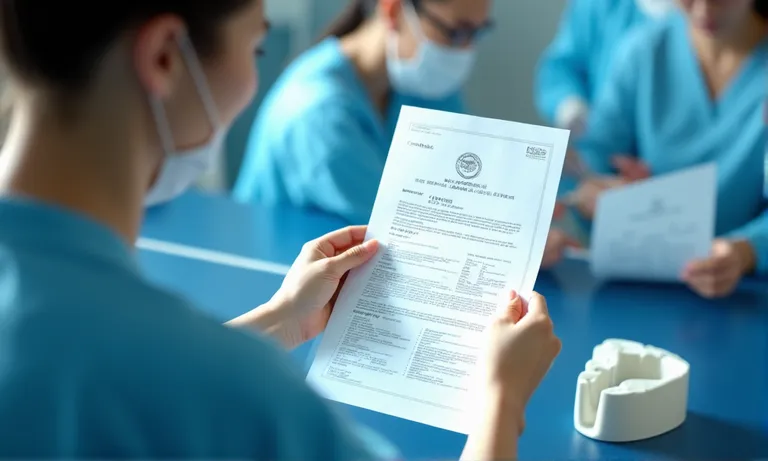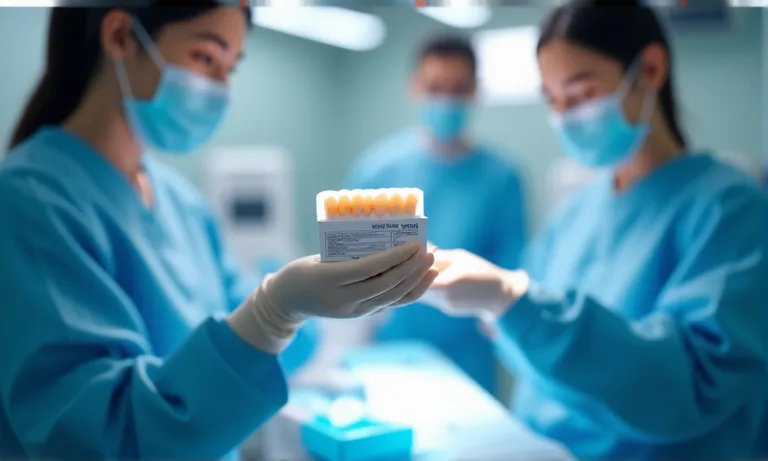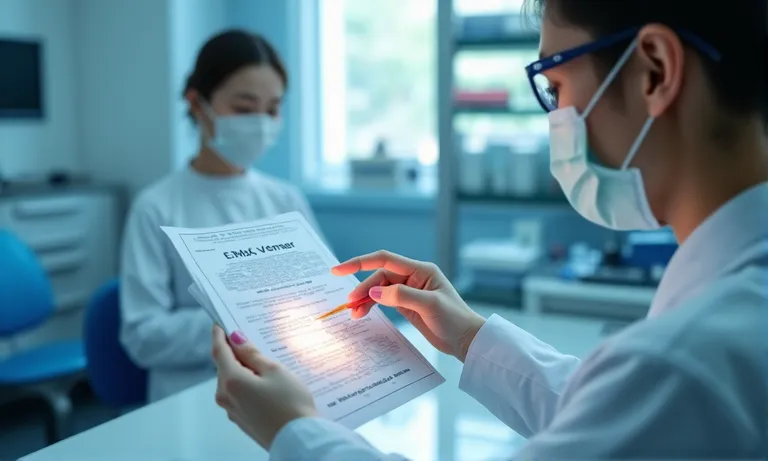Certifying dental materials like e.Max for use in the US and EU can be confusing for clinics navigating legal, clinical, and sourcing risks.
Misunderstanding or overlooking certification requirements leads to customs delays, patient safety concerns, and liability for using non-compliant products.
From CE marks and FDA clearance to ISO standards and shipment verification, knowing what to check—and where to find it—ensures safe, legal, and traceable veneer use across borders.
e.Max veneers are clinically certified for use in both the US and EU through FDA 510(k) clearance and CE marking under MDR. These certifications verify safety, strength, and compliance for intraoral use. Ivoclar’s e.Max products meet ISO 6872 and ISO 13485 standards and are legally approved for veneers, crowns, inlays, and onlays. Proper documentation and batch traceability are required at the clinic and lab level.
What Certifications Are Required for Clinical Use in the US and EU?
For a dental material like e.Max to be used legally and safely in restorative treatments across the US and EU, it must meet strict certification requirements. These not only prove clinical safety and material performance, but also ensure that laboratories and clinics align with international regulatory frameworks.

Dental-lab-checking-emax-certification-documents
CE Marking Requirements for Dental Ceramics
In the European Union, lithium disilicate veneers such as e.Max must carry a valid CE mark under MDR (EU 2017/745).
- CE marking is based on compliance with EN ISO 6872 (for dental ceramics)
- Ivoclar, as the manufacturer, must issue a Declaration of Conformity confirming clinical safety
- CE documentation must be traceable through batch/lot numbers on product labels
FDA 510(k) Clearance for e.Max Products
In the United States, dental ceramics like e.Max are classified as Class II medical devices, requiring FDA 510(k) clearance.
- Ivoclar Vivadent holds FDA 510(k) approval for lithium disilicate restorations
- The approved indications include veneers, crowns, inlays, and onlays
- Labs must verify that their e.Max ingots or blocks are sourced from FDA-cleared batches
ISO Standards for Dental Restorations (e.g., ISO 6872)
ISO standards are globally recognized benchmarks for strength, safety, and classification.
| ISO Standard | Relevance | Required For |
|---|---|---|
| ISO 6872 | Defines strength classes for dental ceramics | CE marking |
| ISO 13485 | Quality management system for medical devices | Manufacturing site certification |
While ISO alone doesn’t grant legal market access, it forms the foundation of certification readiness.
Role of Local Regulatory Agencies and Importers
Beyond CE and FDA, local agencies or importers often have additional documentation expectations.
- In the EU, distributors/importers must retain technical files and language-compliant IFUs
- In the US, the Unique Device Identifier (UDI) must appear on packaging for traceability
- Clinics working with offshore labs must ensure documentation accompanies each case
✅ CE and FDA certifications are legally required for clinical use in the EU and US – TRUE
Use of uncertified materials can lead to legal liability, patient complaints, and import issues, even if the product appears clinically acceptable.
❌ ISO certification alone is enough for legal clinical use – FALSE
ISO standards are a foundation but must be integrated into CE or FDA pathways for actual market approval.
Is the e.Max Veneer System Fully Certified in Both Markets?
Clinicians and procurement teams often ask: “Is e.Max really certified for use in both the US and EU?” The answer is yes—but it’s essential to understand what certifications Ivoclar holds, what they mean, and how they impact each shipment that reaches your lab or clinic.

Ivoclar-emax-certification-label-review
What Certifications Has Ivoclar Secured for e.Max Veneers?
Ivoclar Vivadent, the global manufacturer of the e.Max system, has obtained both FDA 510(k) clearance and CE certification for its lithium disilicate products.
- FDA 510(k): Cleared under K033973, covering e.Max CAD and Press
- CE Mark: Compliant with MDR (EU 2017/745) and ISO 6872
- Certification applies to indications including veneers, crowns, onlays, inlays
These approvals are granted to the manufacturer—not individual labs—which means downstream users must verify they’re sourcing original materials.
What Does the CE Declaration of Conformity Mean for e.Max Veneers?
The Declaration of Conformity (DoC) is a legal document confirming that e.Max meets essential EU safety and performance requirements.
- Must be issued by Ivoclar or its authorized EU representative
- Must include product scope, batch references, applicable standards (ISO 6872), and classification
- Clinics and labs should request this as part of quality documentation on import
What Is the FDA Clearance Status of Lithium Disilicate e.Max Veneers?
e.Max is one of the few lithium disilicate systems with FDA-recognized safety for intraoral use.
- 510(k) approval applies to both pressed and CAD/CAM forms
- FDA classification: Class II restorative device
- Approved for anterior and posterior applications depending on design
What Documentation Should Come with Certified e.Max Veneer Shipments?
Every shipment of e.Max materials should include:
- Original labeling with lot number, UDI, and CE/FDA marks
- IFU (Instructions for Use) in appropriate language (EU requirement)
- Optionally, Material Safety Data Sheet (MSDS) or DoC upon request
✅ Ivoclar’s e.Max system is certified for legal use in both the US and EU – TRUE
It holds FDA 510(k) clearance and CE certification for its intended clinical applications, including veneers.
❌ Labs don’t need to confirm certification as long as it’s from a known brand – FALSE
Even with branded materials, clinics and labs are responsible for verifying batch integrity and labeling for each case, especially in cross-border workflows.
What Quality and Safety Standards Are Involved in e.Max Production?
The reputation of e.Max veneers doesn’t only come from clinical results—it’s also built on rigorous production standards. Ivoclar’s manufacturing ecosystem integrates ISO-certified processes, biocompatibility testing, and strict labeling controls. For clinics and labs, understanding these backend systems enhances trust in every restoration delivered.

Emax-production-quality-standards-lab-audit
Are e.Max Veneers Manufactured in ISO 13485-Certified Facilities?
Yes. Ivoclar manufactures all e.Max materials under ISO 13485: a globally recognized quality management standard for medical devices.
- Covers design, production, labeling, and post-market surveillance
- Ensures traceability of every lot and validation of every process
- Audited by Notified Bodies (EU) and FDA (US) for ongoing compliance
How Are e.Max Veneers Tested for Biocompatibility and Safety?
Lithium disilicate used in e.Max undergoes strict pre-market and in-process testing.
| Test Type | Purpose | Standard Referenced |
|---|---|---|
| Cytotoxicity | Ensures material doesn’t harm tissues | ISO 10993-5 |
| Sensitization | Screens for allergic reaction potential | ISO 10993-10 |
| Oral environment aging | Tests color and structure under saliva | Internal protocol |
These tests support CE marking and FDA clearance, not optional add-ons.
What Sterilization and Packaging Standards Apply to e.Max Veneers?
Although veneers themselves are not supplied sterile, packaging must meet regulatory expectations.
- Primary packaging: Sealed to protect from contamination or moisture
- Labeling: Must include UDI (US) and CE symbol (EU)
- Storage: Instructions must be printed clearly and follow product classification
What Are the Shelf-Life and Labeling Requirements for e.Max Veneers?
Every unit must display:
- Shelf life based on internal aging and color stability testing
- Batch number and lot traceability for recall or documentation
- Date of manufacture and expiration, visible on every box and CAD block
High-aesthetic cases depend not only on artistry, but also on material integrity.
Ask us for Ivoclar’s ISO certifications, MSDS, or original batch labeling samples—we’re happy to support clinical confidence with full transparency.
What Risks Come with Non-Certified Imitations?
Not all lithium disilicate veneers are created equal. While some products mimic the appearance or branding of e.Max, they often lack regulatory clearance and pose serious clinical, legal, and operational risks. For labs and clinics, distinguishing genuine certification from imitation is critical to protecting both patients and reputations.

Non-certified-veneer-risk-warning
What Legal and Insurance Risks Come with Using Non-Certified Veneers?
Using non-certified materials exposes clinics to legal liability—even if the product performs “acceptably.”
- Medical device laws in the EU and US require certified materials for intraoral use
- Malpractice insurers may reject claims involving uncertified restorations
- In audits or lawsuits, the absence of traceable documentation becomes a liability
Why Is Inconsistent Material Composition a Concern in Imitation Veneers?
Unregulated veneers often use inconsistent or untested ceramic compositions.
| Risk Factor | Non-Certified Imitations | Genuine e.Max |
|---|---|---|
| Composition Variability | High (batch-to-batch differences) | Strictly controlled |
| Thermal Stability | Unverified | Clinically validated |
| Long-Term Color Stability | Unpredictable | 10+ year performance data |
Such inconsistencies can lead to fractures, discoloration, or even cytotoxicity.
What Are the Clinical Risks of Using Non-Certified e.Max Imitations?
Beyond legal concerns, these products compromise the clinical outcome.
- Higher risk of debonding due to unknown bonding interface
- Inconsistent translucency leads to shade mismatch
- May fracture during adjustment or function due to unpredictable internal flaws
Why Can Non-Certified Veneers Be Delayed or Confiscated at Customs?
Customs inspections in the EU and US increasingly flag non-compliant imports.
- Missing CE mark or FDA clearance triggers seizure or denial of entry
- Lack of UDI or incorrect labeling leads to delays
- Importers may face penalties or blacklisting for repeat offenses
✅ Non-certified veneers carry legal, clinical, and reputational risks – TRUE
They may look similar to e.Max but lack proven safety, strength, and documentation. Risks span from patient harm to customs confiscation.
❌ If the veneer performs well, certification doesn’t really matter – FALSE
Short-term performance is not a substitute for validated safety and legal compliance. In regulated markets, documentation is not optional—it’s mandatory.
How Can Clinics Verify Certification When Ordering Veneers?
Even when working with well-known brands, the responsibility to confirm certification doesn’t stop at the supplier. Labs and clinics must implement simple, effective checks to ensure every e.Max veneer delivered meets regulatory standards—especially for cross-border workflows or multi-clinic operations.

Dental-clinic-checking-emax-certification-labels
How Can Clinics Request and Verify CE and FDA Documentation?
Certification is not confidential—it’s a right for every clinical user to request.
- Ask your lab for the Declaration of Conformity (DoC) for EU use
- Request FDA 510(k) reference number or Ivoclar’s product clearance letter
- If importing, confirm documents are current and aligned with the batch number
Labs that resist providing certification data may not be sourcing from compliant suppliers.
Why Is It Important to Match Batch Numbers and Labels When Verifying Certification?
True traceability links every case to its manufacturing origin.
- Every e.Max CAD block or ingot has a lot number, expiration date, and UDI
- Ensure this data appears on the case work slip or lab invoice
- For multi-unit cases, cross-check that all restorations were milled from the same certified batch
This protects clinics during audits, recalls, or patient claims.
How Can Trusted Labs Help Ensure Certification Compliance?
Labs are your frontline quality gate—not just a product provider.
- A trusted lab tracks material sourcing and keeps digital documentation on file
- Can flag expired lots or inappropriate applications (e.g., posterior-only blocks for veneers)
- Can share full compliance records upon request—including ISO certificates or MSDS
Why Should Clinics Include Certification Checks in Their Case Protocols?
Building verification into your routine removes future risk.
- Add a certification review step to veneer case planning
- Have staff trained to identify valid CE/FDA markings
- Store all documentation with patient records for future reference
Certification is not a paperwork exercise—it’s clinical protection.
Need help building a certification checklist or verifying an e.Max batch? We’re here to support.
Conclusion
Global certification standards aren’t optional—they’re essential for safe, legal dental care. From CE marking to FDA clearance, every e.Max veneer should be backed by verifiable documentation, traceable batches, and certified manufacturing. Clinics and labs that treat certification as part of their workflow gain not only compliance, but also trust, protection, and clinical confidence.
- Confirming regulatory approval for e.Max protects against import delays and legal risks.
- Reviewing the requirements of CE marking in the EU ensures compliance for intraoral restorations.
- Understanding the FDA 510(k) status for Ivoclar e.Max clarifies clinical use in the US.
- Verifying ISO-certified manufacturing and testing standards supports long-term quality and performance.
- Avoiding clinical and legal risks of uncertified imitations protects patients and practices.
- Implementing a routine certification review process builds operational integrity and trust.
Want reliable, fully certified e.Max veneers? Reach out to Raytops Dental Lab for documentation-ready restorations trusted by clinics across the US and EU.


